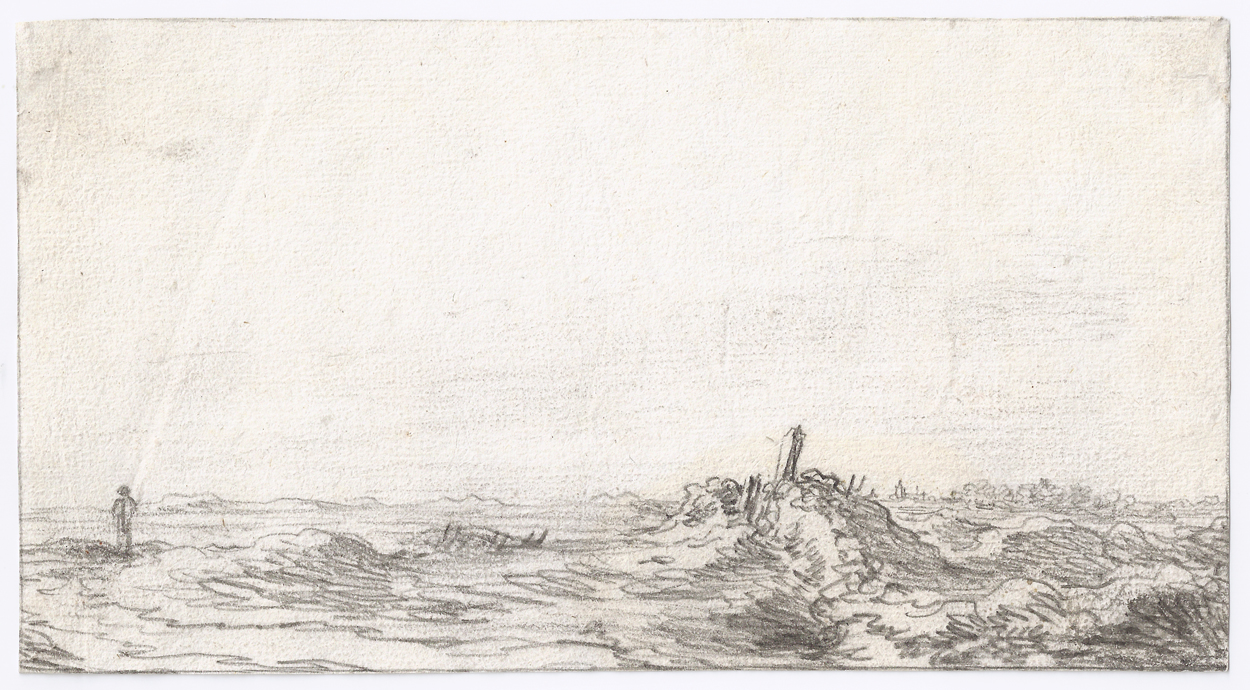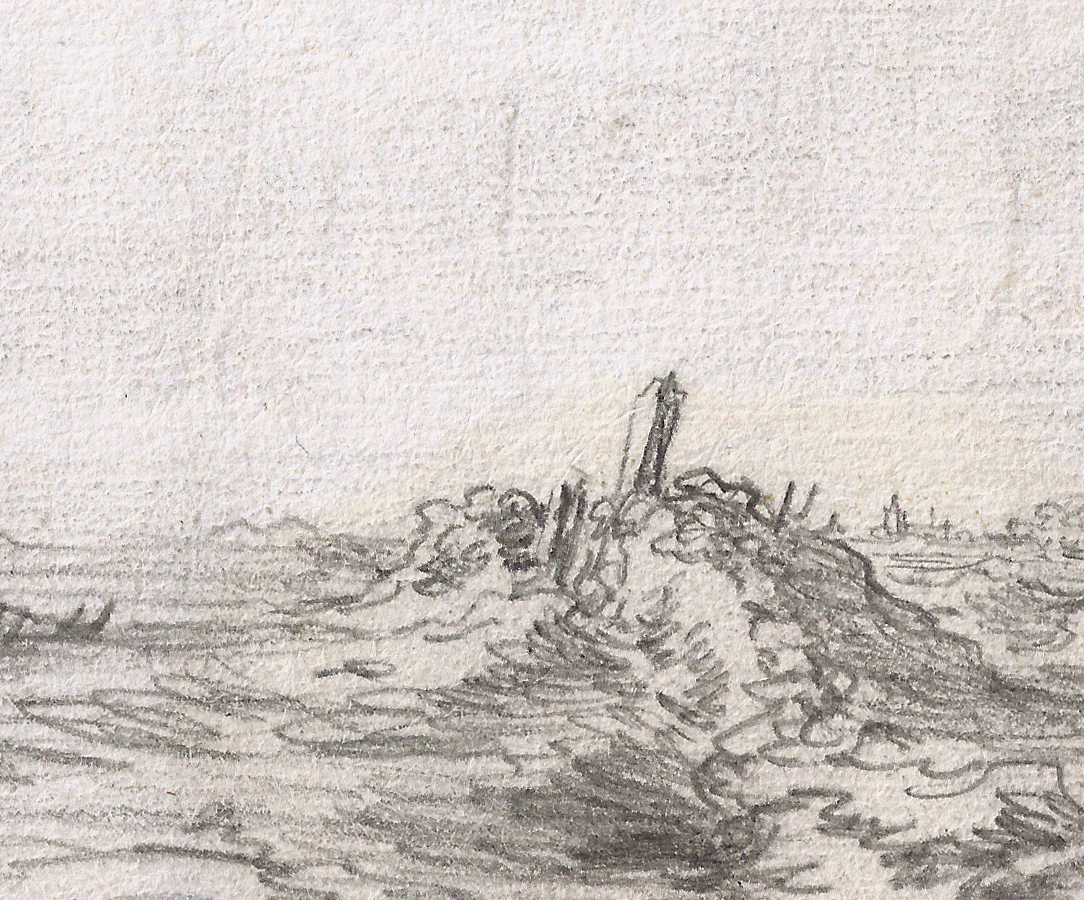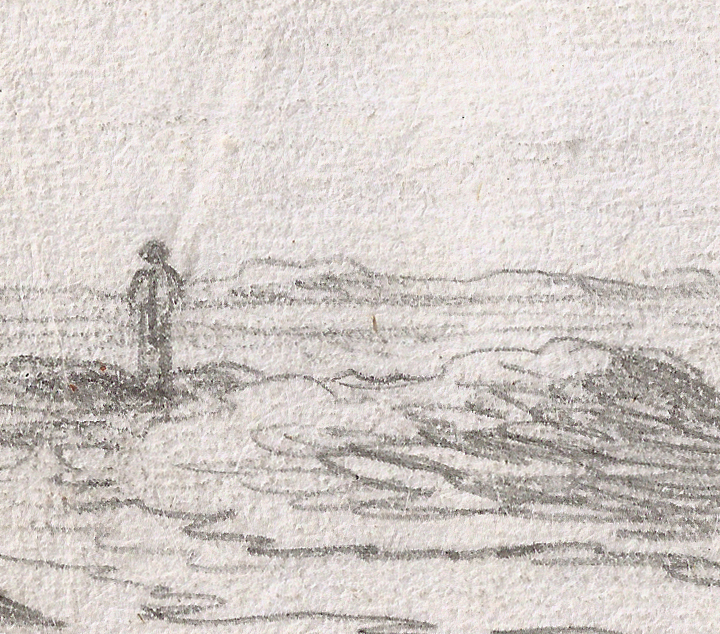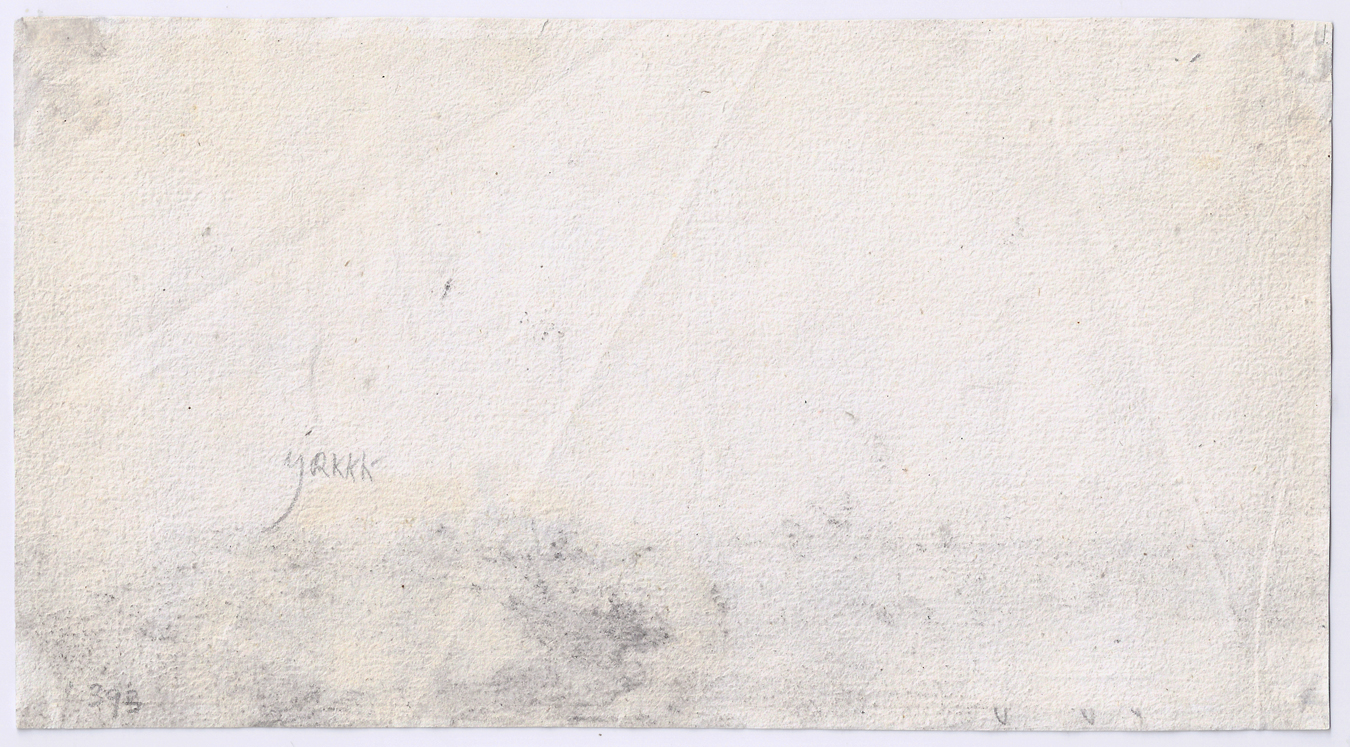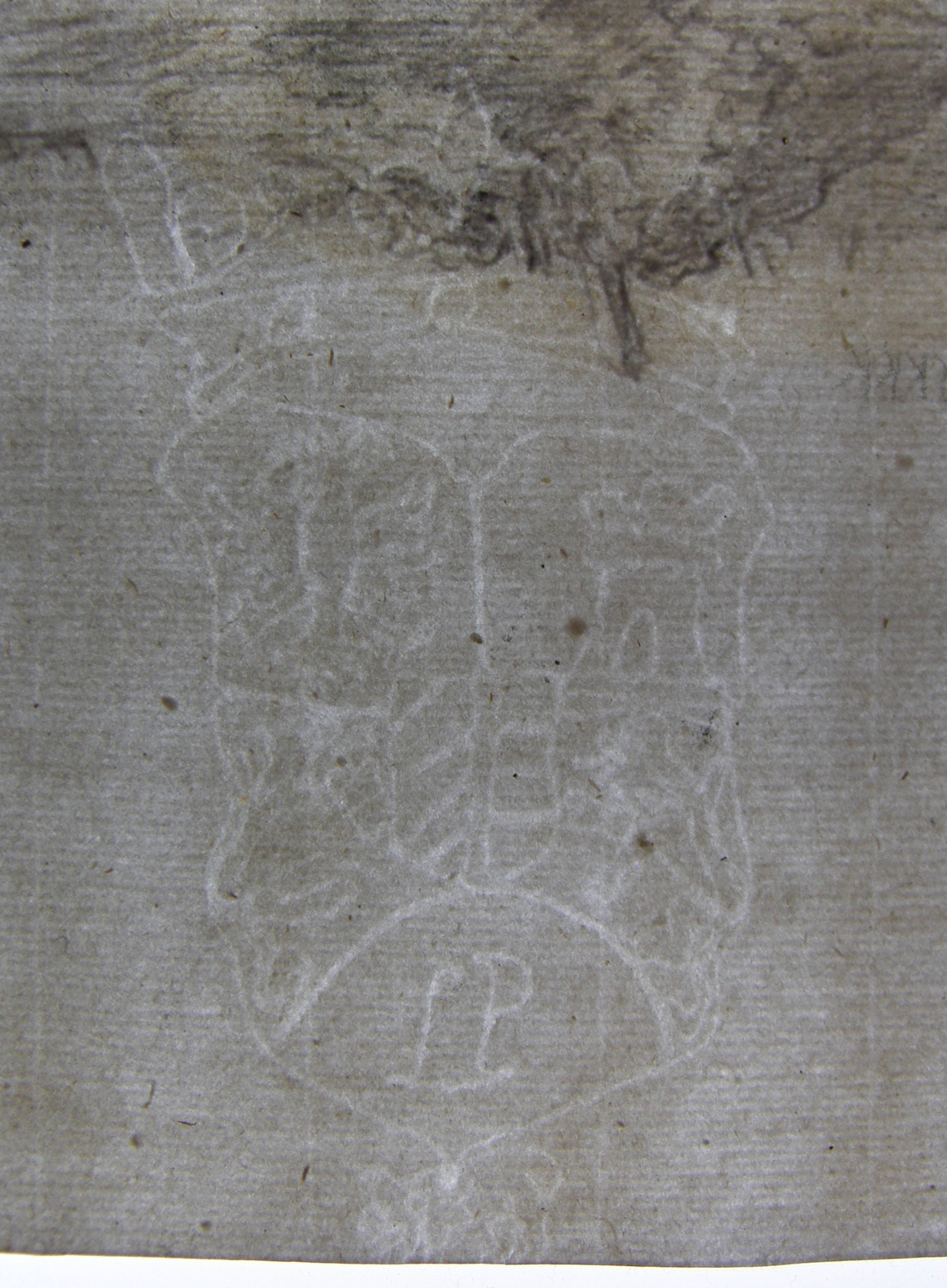JAN JOSEFSZ VAN GOYEN (Leiden 1596 – 1656 The Hague)
Jan Josefsz van Goyen (Leiden 1596 – 1656 The Hague)
A Dune Landscape with a Pole on a Rise and a Church in the Distance
Black chalk, black chalk framing lines, watermark arms of Burgundy and Austria with letters IP,1 122 x 226 mm (4.8 x 8.9 inch)
Provenance
~ Acquired in Amsterdam in the 1920s by a private collector, and by descent until sold at:
~ Christie’s, Amsterdam, 13 November 1995, lot 127, repr.
~ With dealer Theo Laurentius, Voorschoten, 1998
~ Private collection, The Netherlands, until 2012
***
Jan van Goyen began his apprenticeship at age ten and studied with six different masters. Only one influenced him deeply, namely Esaias van de Velde, a pioneer of naturalism in Dutch landscape painting. Van Goyen traveled frequently around the Netherlands and visited France. He painted river views and seascapes as well as city views and winter scenes. In 1632 he moved to The Hague, where he remained for life. Until about 1630, Van de Velde’s detailed and colourful compositions influenced Van Goyen’s work, but afterwards his compositions were simplified, his palatte became more monochrome in hues of green, brown and grey, and his handling looser. To this day his paintings and drawings epitomise the archetypal Dutch landscape.
Van Goyen is one of the most prolific artists of the Dutch 17th century: some 1200 paintings and about 800 drawings are known today, plus some etchings. In addition to this impressive oeuvre, Van Goyen also dealt in pictures, and speculated in land, houses and tulip bulbs. Despite (or becuase of) this, he constantly had financial difficulties and died insolvent in 1656. His daughter married the painter Jan Steen.
The present sheet of a landscape on the outskirts of The Hague exemplifies the flat Dutch landscape even more than most of Van Goyen’s other works. Despite the apparent simplicity of the composition with its linear almost unbroken horizon, the foregroud is depicted with assured and agitated bravura, which seems to forebode Van Gogh’s drawings. It has been suggested by Theo Laurentius that the sheet takes as its subject the Raaphorster Zandzee, just outside The Hague near the Raephorst and De Horsten estates, with the church of Wassenaar or Valkenburg in the distance.
The attribution was confirmed by Dr. Hans-Ulrich Beck at the time of the 1995 sale.
SOLD
1. The watermark may be compared to that illustrated by H.-U. Beck, Jan van Goyen 1596-1656, Katalog der Handzeichnungen, Amsterdam 1972, vol. I, p. 337, fig. 47. A drawing by Van Goyen of 1631 is executed on paper with the same watermark (Beck 690).
